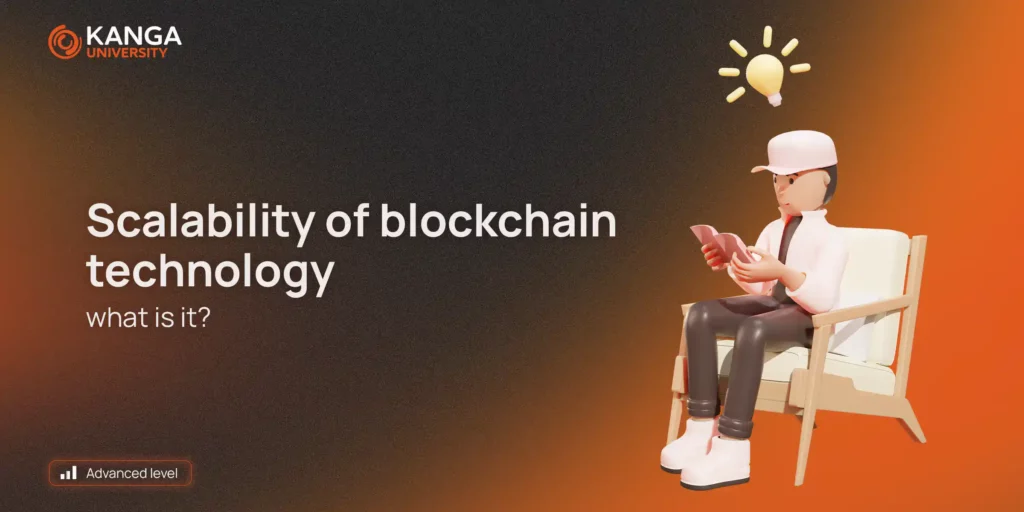

Blockchain is a decentralized technology, acting as a distributed ledger to power transactions. Because each transaction is decentralized, each node can autonomously initiate transactions. Of course, according to the contract, more specifically – a smart contract. All without third-party interference.
As more and more people use blockchain technology, the number of problems related to its scalability is growing. As a result, transactions are delayed. In today’s lesson, we will discuss blockchain scaling solutions and how to make transactions on time.
Blockchain scalability
Scalability is the ability of the system to handle an increasing amount of work. If the blockchain networks too much data, it will not work properly. Then the blockchain will have very low scalability.
Blockchain is scalable when it achieves a higher TPS than other systems by changing its consensus method and adapting the system to current needs.
So, what is the issue?
Public blockchains, they are inefficient. This is a bold statement, but true. Blockchain is a ledger that manages cryptographically signed transactions in P2P networks. They store and process a huge number of transactions. For this reason, blockchain encounters scalability issues, especially with more nodes and transactions.
To solve this problem, blockchains require more computing power, a fast Internet connection and good on-chain memory. Latency and throughput of transactions are two features that affect blockchain. It is known that increased use cases cannot affect the performance of the blockchain platform.
So, how to solve the problem? Many experts on the subject suggest compromise on security and the level of decentralization. Then there is a chance that we will increase the scalability in blockchain. Now let’s check what solutions they offer us.
Blockchain scalability – solutions
Layer 1 (Layer1) scalability solutions. They improve the most important properties and attributes of blockchain networks. We are talking here about increasing the block size limit or shortening the time of its verification. The scalability of the first layer also includes: sharding, SEGWIT and hard forks. Tier 1 solutions are often called on-chain scaling solutions because they require changes to the main network codebase. Let’s take a look at them:
- Sharding – its task is to divide the blockchain network into smaller and easily managed networks, called shards. The network then runs the shards side-by-side. With each shard, the performance of network transaction processing increases.
- SEGWIT – its task is to improve the protocol in the blockchain network, mainly Bitcoin. It modifies the method and structure of data storage. It removes data from the signature associated with each transaction and thus increases the capacity and space for storing transactions.
- Hard fork – introduces changes to the properties of the blockchain network. A fork may involve increasing the size of a block or reducing the time it takes to create it.
Second layer (Layer 2). Layer two solutions offer us additional protocols, installed on top of the main one blockchain. They are used to relieve the main chain. Layer 2 options also include state channels and off-side chains.
- State Channels. They offer two-way communication between off-chain transaction channels and blockchain networks. They do not require the immediate involvement of miners to approve the transaction. Furthermore, they are integrated into the network using a smart contract or multi-signature mechanism.
- Sidechain. It’s also an excellent choice for layer 2 solutions. As the name suggests, a sidechain is a side chain that is adjacent to the main chain and serves as a transaction chain.
- Plasma. It uses the so-called “child chains” that “exit” from the main chain, with each of the child chains serving as independent blockchain. They process their transactions while providing security from the main chain.
- Lightning network. Off-chain solution. It uses smart contract functionality over the main blockchain network. Off-chain channels offer faster transactions with reduced fees.
5. Scaling scattered books. It is worth noting here that blockchain, they are basically part of a larger DLT (distributed ledger technology) ecosystem. Apart from blockchain, there are more types of ledgers that could be used to increase scalability. As an example, to solve blockchain scalability, we can provide Directed Acyclic Graphs or DAG’s. Both run asynchronously, which gives you the ability to run transactions independently. What’s more, DAG’s use a linear data structure in their operation, which allows data to flow from before later sections. This allows you to process an unlimited amount of data.
6. Scaling the consensus mechanism. You know that there are many consensus algorithms, tailored to the needs of the platform. However, scaling them is one way to increase the scalability of the blockchain.
Summary
Demand for services offered by Blockchain will grow. Current demand has already led to scalability issues. The more users, the more transactions. As you can see, there are many solutions, be it layer 1 or the scalability of the consensus mechanism. Note, however, that many of these solutions are still in the early stages of development.

